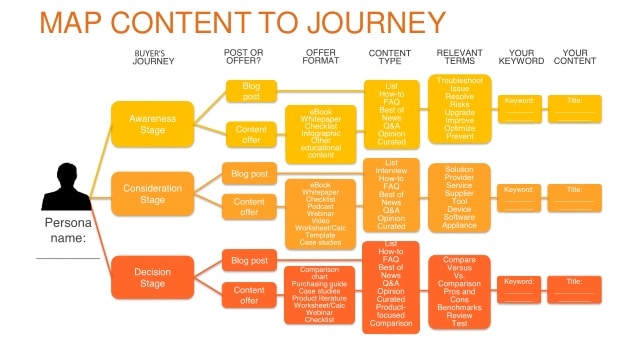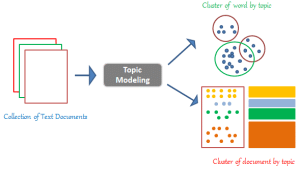
How to Pick Blog Categories and Content Themes
Remember the old fashion “News” paper. Do you know why it was called that?
Noteworthy. Entertainment. Weather. Sports. NEWS! Maybe this was news to you?
Every single day, readers could expect coverage of each of those categories. Just as they continue to see consistent coverage of politics, business, local news, sports and weather on whatever digital news publication you read or watch today.
What does this have to do with content marketing? When you become intentional about choosing categories and themes for your weekly blog content, you maximize their potential to help you achieve your goals.
The good news is that even your old content can be sorted into new categories and themes that you choose, and you can refresh it to perform better than it has in the past. And new content?
You’ll have more direction, a clearer vision, and a roadmap for you and your audiences (including the search engines ranking your posts!) to follow as they navigate your content.
Quick Takeaways
- Search engines use topic modeling to mine content and determine its relevance to topics and themes.
- Content marketers can perform smaller-scale versions of topic modeling.
- Design thinking is a human-centered, empathetic approach to thinking like your customer and creating content that meets their needs.
- Sorting your insights and putting them into a content calendar helps stay focused on your categories and themes.
Why are blog categories and content themes important?
They Give Your Strategy Direction
Blog categories serve as a guide for writers and brands. Developing editorial content is much easier and more intentional with blog categories as a reference point to be sure you’re staying on track.
Well-defined and thought-out blog categories help you avoid the common pitfalls of lopsided content (too much in some categories, not enough in others) or veering off course into categories that don’t align with your strategy.
They Provide a Map
Blog categories and content themes provide a roadmap for two of your most important audiences: your readers, and the search engine algorithms that rank your content.
They make your site more navigable and create quick access for readers to the content most relevant to them. At the same time, they make it easier for Google algorithms to understand what each page is about and rank it accordingly.
You can also use your blog categories and themes to create a visual customer content journey map, which helps you identify how your content is addressing customer needs at each stage of their journey.

Image Source: Felber PR
They Help Message Your Brand
Accurate blog categories can actually help with your brand message because they clearly communicate the overarching purpose and value of your brand.
When your blog categories are intentional, they demonstrate the range and specifics of your expertise.
They Create a Better User Experience
Visitors to your blog have a better experience when they can easily navigate your content.
Blog categories ensure your readers don’t have to spend extra time scrolling through your content to find more on a certain topic.
Categories also highlight your most important blog topics, best performing posts, current features, or anything else you want to make more visible to your audience.
How to Choose Blog Categories and Content Themes
The most successful blogs use categories and themes to make their content stand out. This is not as easy as sitting down and brainstorming a list of topics that come to mind.
It requires using strategies to help you move past the status quo and uncover new content ideas that are compelling and unique.
When you take a strategic approach to choosing blog categories and content themes, you can find new opportunities to:
- Put a new spin on old topics
- Make connections between existing topics that spawn new ideas
- Dive deeper into the mind of your target audience
- Leverage timely trends and current events to create high-performing content
Let’s explore these strategies.
Topic Modeling
Topic modeling is used by Google and other search engines to mine vast amounts of web content and identify the patterns, relationships, and meaning behind their text. Using algorithms that mimic human intelligence to analyze sentiment and context, topic modeling can accurately assess the relevance of web pages to particular search queries and phrases.
Here’s a helpful visual that helps with conceptualizing the topic modeling process:

Content marketers with standard old human brains can’t perform topic modeling at the same scale Google can. But when you understand the concept, you can perform a smaller-scale version to come up with blog categories and themes that optimize your content to rank for the topics you intend.
Here’s how:
Audit Your Current Content
Go through the content you’ve already published. Sort it by performance. Identify what’s performing well and what isn’t. Look for categories and themes across your well-performing content for greater insight into what your audience demands.
Analyze content that is underperforming and dig deeper into why it’s happening. Is that content simply not optimized well? Does it cover topics that simply don’t interest your audience? Use this process to learn more about which categories and themes to expand on and which to phase out of your content plan.
Use a Keyword Research Tool
Keyword research tools help you identify keyword clusters. These are groups of keywords to target for search queries around a specific topic. Using tools like SEMRush, you can enter a list of topics related to your business and the tool will generate groups of keywords you can bucket under each topic.
Like the larger topic modeling process performed by search engines, keyword research looks for user intent behind search queries and keyword phrases to connect them with appropriate topics.
Think Like Your Audience
Putting your audience first is a general best practice across any form of content marketing. But when it comes to choosing blog categories and content themes, it’s especially important. As content creators, it’s easy to get caught up on topics and content we assume our audience wants without actually researching or asking them about it.
You can ask your audience for topic ideas en masse with tools like email surveys or pop-ups at the end of your blog articles. You can also use internal processes like design thinking (more on that next) to think about your content from your audience’s perspective.
Remember, too, that customers are not your only audience. Consider asking industry partners, employees, and any other groups who might be reading your content for their opinion, too.
Design Thinking
We know that thinking like your audience is an important way to understand which blog categories and content themes will meet their demand. So how do you do it?
Design thinking is a human-centered, empathetic approach to creative problem solving that allows you to better understand your audience’s needs. It helps you to turn your audience’s problems into opportunities to provide the content to solve them.
Design thinking is utilized by innovative companies in every industry. It involves five main steps:
-
- Empathize – Talk to and observe your customers and audience to understand their needs.
- Define the Problem – Clearly outline the needs and problems your customers are trying to solve with your content.
- Ideate – Come up with many ideas that have the potential to solve the problems.
- Prototype – Develop a plan for applying what you’ve learned. In this case, incorporate your insights into blog categories, content themes, and editorial calendar.
- Test – Test your content with real users. Adjust and go back to previous steps until your content is meeting its performance goals.
Sounds just like content marketing doesn’t it?
It’s important to keep in mind that design thinking is an iterative process. The world changes, and so do your audience’s needs. Don’t be discouraged by the need to revisit steps in the design thinking process. Instead, embrace design thinking as part of your marketing team’s culture and encourage a continual, every-day focus on customer needs.
Sorting Your Insights
As you use topic modeling and design thinking techniques to collect information, you can sort them to make them applicable to your content plan.
- Keyword clusters – Keyword clusters identified by your keyword research helps you sort important keywords and phrases into topic buckets.
- Content gap analysis – Identify gaps where you need to create more content for an important topic.
- Content connections – Use insights from topic modeling, keyword research, and design thinking exercises to find connections between related topics.
- Prioritize existing content – When you see which topics are most relevant for your audience, you can prioritize refreshing old content in those areas.
Putting it All Together
The best way to ensure your blog categories and content themes are appropriately represented in your content over time is to build a content calendar that tracks it. Content calendars can be as sophisticated as a dynamic content calendar that sends real-time notifications and performance metrics, or as simple as a manually-built excel spreadsheet.
The good news: neither is a bad option. In fact, simple can be better when you’re just starting out. The most important thing is that it’s usable and valuable for your company.
Here’s a guide to help you get started building an annual content plan and calenderizing it:
Optimize Categories and Themes with Confidence
Marketing Insider Group has teams of experts who can help you navigate the process of optimizing your blog categories and content themes. We also have writers who can deliver you ready-to-publish content every single week for a year (or more).
To learn more, check out our Content Builder Services or schedule a free consultation any time!






